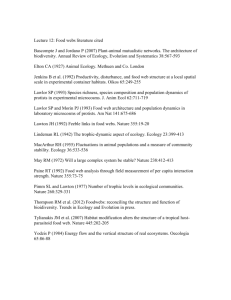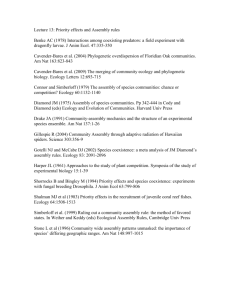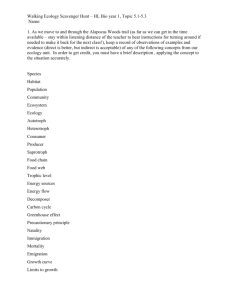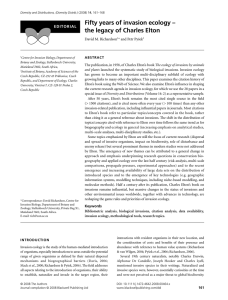Community ecology: Diversity, Stability, Function Dr. Dan
advertisement
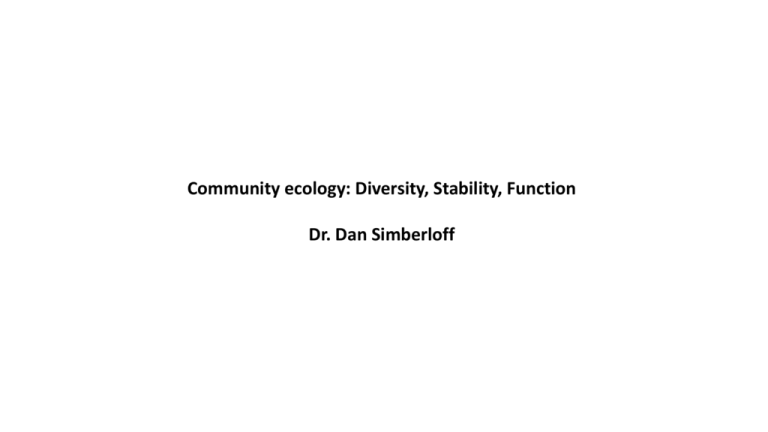
Community ecology: Diversity, Stability, Function Dr. Dan Simberloff 1912 Summerhayes, V.S. and Elton, C.S. 1923. Contributions to the ecology of Spitsbergen and Bear Island. Journal of Ecology 11(2): 216-233. 1927 Charles Elton http://maggiesscienceconnection.weebly.com/habitats-food-chains--webs-trophic-pyramid.html http://nefsc.noaa.gov/publications/crd/crd1215/ 1958 Diversity begets stability 1) Mathematical models of 2-species systems tend to be very unstable. 2) Laboratory experiments with just 2 species tend to lead to extinction of one or both (e.g., Gause). 3) Communities on small islands much more likely to be devastated by biological invasions than those on continents. 4) Outbreaks and invasions occur more frequently on cultivated land than in natural habitats. 5) Ecological stability and lack of invasions in tropics. 6) Research on orchards showing that spraying with pesticides (e.g., DDT) killed predators and led to outbreaks of pests. Simberloff, D. 2012. Integrity, stability, and beauty: Aldo Leopold’s evolving view of nonnative species. Environmental History 17(3): 487511. 1973 main take-home message: Contrary to ecology’s central dogma, increased species number and complexity of food web structure usually lead to decreased stability. Therefore ecologists ought to focus on those particular types of complexity that produce mathematical stability, since there seems to be a high but not perfect correlation in nature between complexity of trophic structure and stability of the community. 1975 Goodman, D. 1975. The theory of diversity-stability relationships in ecology. The Quarterly Review of Biology 50(3): 237-266. Science 2001 Ecological Monographs 2001 Nature 441, 629-632, 2006) VS. TRENDS in Ecology & Evolution Vol.16, No.11 November 2001 Science 1997 Paul and Anne Ehrlich 1) the “rivet-popper hypothesis” (Ehrlichs) (functional redundancy) 2) complementarity 3) facilitation Jennifer Dunne Dunne, J. 2008. Food webs. In R.A. Myers (Ed.), Encyclopedia of complexity and systems science (pp. 3661-3682). New York: Springer Dunne, J. 2008. Food webs. In R.A. Myers (Ed.), Encyclopedia of complexity and systems science (pp. 3661-3682). New York: Springer Dunne, J. 2008. Food webs. In R.A. Myers (Ed.), Encyclopedia of complexity and systems science (pp. 3661-3682). New York: Springer Dunne, J. 2008. Food webs. In R.A. Myers (Ed.), Encyclopedia of complexity and systems science (pp. 3661-3682). New York: Springer Cadotte et al. 2011, J. Applied Ecology Mouillot, D. et al. 2013. A functional approach reveals community responses to disturbances. Trends in Ecology & Evolution 28(3): 167-177. Mouillot, D. et al. 2013. A functional approach reveals community responses to disturbances. Trends in Ecology & Evolution 28(3): 167-177.


